|
The Cretaceous Corals
The Cretaceous corals from New Jersey do not occur
with any great abundance or diversity. Only the Scleractina or the Stony
Corals have been reported from the New Jersey Cretaceous and the number
of species limited to just over a handful. Most of the Cretaceous
Scleractina corals where composed primarily of aragonite, a form of
calcium carbonate that is fairly unstable and is commonly dissolved away
by the acidic groundwater. In most areas the corals have dissolved away
leaving delicate steinkerns (molds). In a few locations the consistency
of the clay acts as a natural barrier to the groundwater and fossils may
be found as original material.
I've divided this page by family (only three are known in NJ) and where
possible provide examples of both steinkerns and original material
preservation.
Family Rhizangiidae
Genus Astrangia Milne-Edwards & Haines
1848
Subgenus Coenangia Verrill 1969
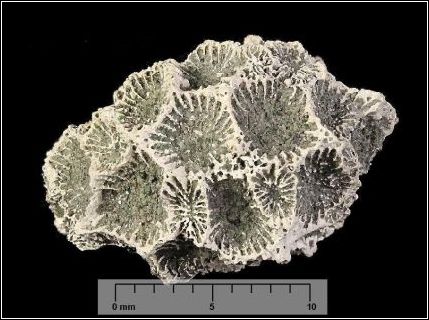
Astrangia
(Coenangia) cretacea preserved as original material.
Woodbury Formation
Camden County, NJ
Family Caryophylliidae
Genus Trochocyathus Milne-Edwards and Haime.
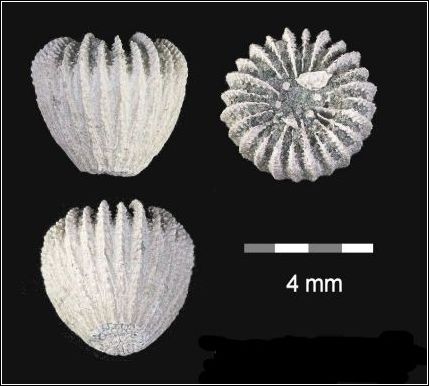
Plate 1
Trochocyathus woolmani Vaughan
Original material
Woodbury Formation
Camden County, NJ
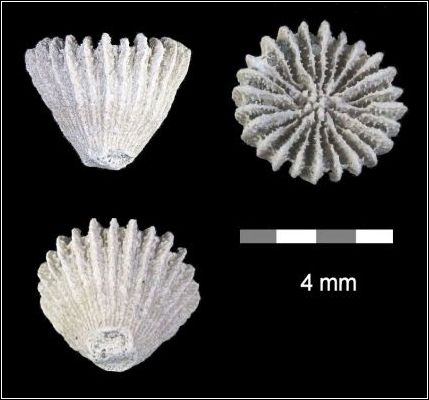
Plate 2
Trochocyathus woolmani
Trochocyathus is a solitary coral; Weller (1907) describes three
species from NJ
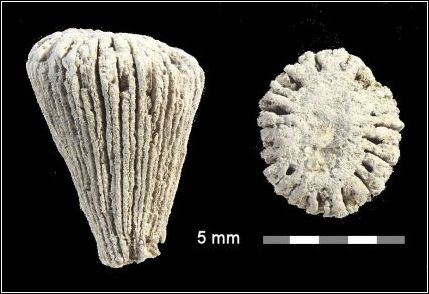
Plate 3 T. woolmani Steinkern
Wenonah Formation
Monmouth County, NJ
.
Family Micrabaciidae
Genus Micrabacia Milne-Edwards and Haime
Also known as button corals, two species of the solitary coral
Micrabacia have been reported from
New Jersey.
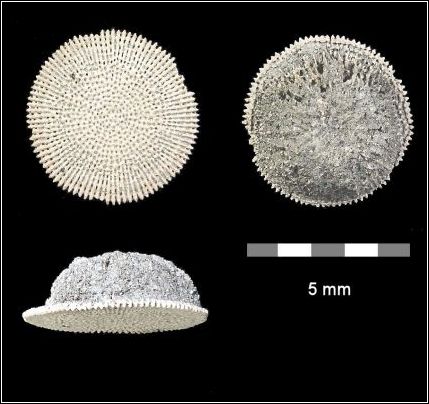
Plate 4
Micrabacia cribraria Stephenson 1916
Beautifully preserved as original Material.
Woodbury Formation
Camden County, NJ
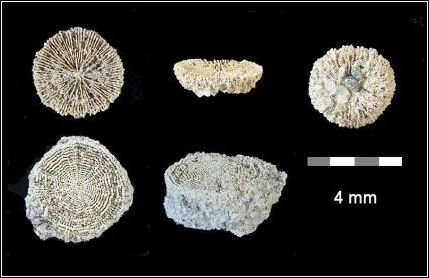
Plate 5
Micrabacia cribraria - steinkern
Top row -
typical steinkern preservation
Bottom row - highly detailed preservation
Wenonah Formation
Monmouth County, NJ
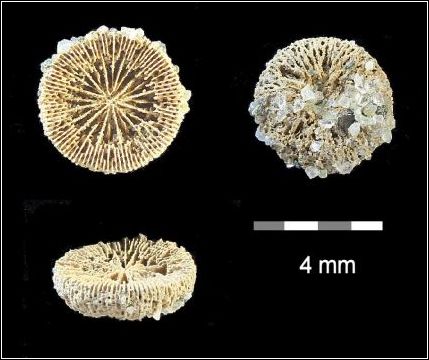
Plate 6
Micrabacia hillgardia
steinkern
Weller (1907) reported Micrabacia Americana from NJ,
which is a synonym for Micrabacia hillgardia
|






